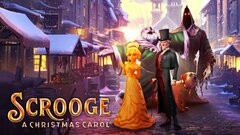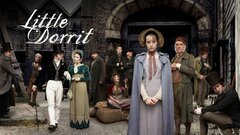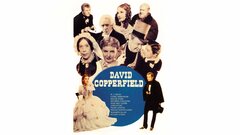Charles Dickens

Writer • Critic
Birth Name: Charles John Huffham Dickens
Birth Date: February 7, 1812
Death Date: June 9, 1870 — 58 years old
Birth Place: Portsmouth, Hampshire, England, UK
One of the most popular and widely read authors of all time, Victorian author Charles Dickens wrote some of the English language's best-known novels, many of which were transformed into great works of cinema and television. Following a hardscrabble life as a child laboring under harsh conditions, Dickens used his gifts for colorful characters, high sentimentality and memorable dialogue to unearth harsh truths about poor social conditions and the plight of the poor in England and abroad.
Early novels like The Pickwick Papers (1837) and Oliver Twist (1837) announced the arrival of a substantial artist, while A Christmas Carol (1843), his most enduring and most adapted work, became his most popular. Dickens' artistic ambitions became more pronounced with David Copperfield (1850), while both A Tale of Two Cities (1859) and Great Expectations (1861) came to rival the works of Shakespeare, Chaucer and Milton.
With over 200 film, television and stage adaptations of his work, many were easily forgotten. But David Lean's extraordinary adaptation of "Great Expectations" (1946), Alastair Sim's turn as Ebenezer Scrooge in the classic feature "A Christmas Carol" (1951), and the Oscar-winning musical "Oliver!" (1968) stood out as worthy odes to the author. Though praised and scorned by contemporaries and later critics alike, Dickens was a colossal figure in the literary world whose influence and popularity remained unfettered well into the 21st century.
Born on Feb. 7, 1812 in Landport, Portsea Island, England, Dickens was raised the second of eight children by John, a clerk at the Navy Post Office, and his mother, Elizabeth. While he spent the first 11 or so years living in rather peaceful middle-class environs, Dickens' life changed radically when his father - a man who routinely lived outside his financial means - was thrown into the Marshalsea debtors' prison for failure to pay his debts. Some of the family, including his mother, went to live with his father at the prison, but Dickens took up residence with Elizabeth Roylance, an elderly and poverty-stricken friend of the family.
In order to pay for his and his family's way, Dickens left school and worked 10 hours a day pasting labels on boot blacking pots at Warren's Blacking Warehouse, a grueling job that made a permanent impression and inspired much of his literature later on as well as his desire to change England's harsh socio-economic system. Just a few months after his father was imprisoned, Dickens' great-grandmother, Elizabeth Dickens, passed away and left the family enough money for John to pay off his creditors and allow his family to leave Marshalsea for good.
Even though his father had been released from debtors' prison, Dickens was still forced by his mother to work at the boot blacking warehouse, a decision that infuriated the youngster and further disgusted him with the plight of working-class people. He was able to return to school at the Wellington House Academy, however, though Dickens later castigated the institution over the poor quality of his education. Eventually, he found work as a junior clerk at the law offices of Ellis and Blackmore in 1827 while learning shorthand in his spare time, which led to becoming a freelance reporter.
For the next four years, Dickens gained entry to London's Doctors' Commons, a society of lawyers that practiced civil law, thanks to a distant relation who worked there as a freelance journalist. Like the warehouse, the experience had a profound effect on Dickens' perception of bureaucracy and England's legal system, and greatly influenced his work as an author, especially Bleak House. Meanwhile, in 1832, the directionless 20-year-old Dickens briefly flirted with becoming an actor before turning to writing by submitting his first story to the London periodical Monthly Magazine while working as a political reporter, which in turn led to his literary career.
It was while traveling the country covering political campaigns for the Morning Chronicle that Dickens published a series of sketches under the name Boz which ran from 1833-36, and were later collected in the serialized publication Sketches by Boz (1837-38). The sketches were both short fiction and non-fiction pieces that detailed life and people in and around London. From there, he was asked to follow up on the success of his Boz Sketches with The Pickwick Papers, a serialized accounting of the loosely-tied adventures of Samuel Pickwick, a wealthy and kindhearted gentleman who travels the countryside with three others in search of curious phenomena.
But the serialization ran into problems when Dickens quarreled with illustrator Robert Seymour, a long sufferer of mental illness who committed suicide in 1836 before publication was complete. Dickens and Seymour had routine spats over the drawings that eventually led to a dispute between the author and Seymour's widow over who originated the idea of The Pickwick Papers. Decades later, once he was nearing the end of his own life, Dickens vehemently denied Seymour's involvement in its creation. The Pickwick Papers were published in novel form in 1937, while the following century the novel adapted into a 1952 film starring James Hayter and a 12-part TV series that aired on the BBC in 1985.
In April 1836, Dickens married Catherine Thomas Hogarth, daughter of Evening Chronicle editor George Hogarth, following a year-long engagement, and over time led to the birth of 10 children. Meanwhile, he became the editor of Bentley's Miscellany and began writing the installments to what became Oliver Twist (1837), one of his most famous novels. Drawing upon his experiences in child labor, the novel followed the titular Twist, a young orphan who endures miserable work conditions while falling in with a gang of juvenile pickpockets led by the cunning Artful Dodger.
Mixing grim realism with a satirical look at poverty and social classes, Oliver Twist was criticized for alleged anti-Semitism due to the stereotypical Jewish character of Fagin. Nonetheless, it remained one of Dickens' more popular works and was adapted for the screen several times starting with a short silent version in 1909. David Lean directed the most acclaimed version in 1948 starring Alec Guinness, while 1968's musical adaptation Oliver! won the Oscar for Best Picture. He next published The Life and Adventures of Nicholas Nickleby, which was adapted several times, most notably by Douglas McGrath in 2002, and The Old Curiosity Shop, which was adapted into silent films, features and several British TV series.
In 1842, following the publication of Barnaby Rudge: A Tale of the Riots of 'Eighty' (1841), Dickens made his first of two trips to the United States, where he traveled broadly and gave numerous public lectures on the issue of copyright law and the pirating of his work. His trip culminated in his travelogue American Notes for General Circulation (1842), which contained a scathing condemnation of slavery, which he connected to the struggles of the poor in his own country. Upon his return home, Dickens began work on the first and most famous of his five Christmas novellas, A Christmas Carol (1843), which introduced the world to the Ebenezer Scrooge, a miserly moneylender who undergoes an ethical and emotional transformation after seeing the effects of his cruelty following a visitation from the Ghosts of Christmas Past, Present and Future.
Throughout the 20th century, Dickens' eternally popular novella was adapted into too many films, plays and television events to count, but most notably was transformed into "Scrooge" (1951) starring Alastair Sim in his iconic titular performance, "A Christmas Carol" (CBS, 1984) starring George C. Scott, and Richard Donner's "Scrooged" (1988), a modern comedy featuring Bill Murray as a Scrooge-like television executive.
Bitten by the travel bug, Dickens journeyed across Europe and lived briefly in Italy in 1844, before traveling to Switzerland where he began work on Dombey and Son (1848), which focused on the wealthy owner of a shipping company and his desire to pass on his business to his son. He also continued writing his series of Christmas novellas with the lesser-known titles The Chimes (1844), The Cricket on the Hearth (1845) and The Battle of Life (1846). Following his fifth and final Christmas novella, The Haunted Man and the Ghost's Bargain (1848), Dickens embarked on a creative transformation that propelled him toward more serious themes and produced some of his most famous works.
He next wrote one of his greatest novels, David Copperfield, which followed the life adventures of its diligent and persevering titular character from youth to maturity. Drawing heavily from his own life, the novel proved to be Dickens' most autobiographical and was published in serial form from 1849-1850. Though one of his most popular novels, David Copperfield yielded few screen adaptations compared to similarly famous works. After a pair of silent versions, George Cukor helmed a notable one in 1935 with W.C. Fields and Lionel Barrymore, while Delbert Mann directed a 1969 version with a host of classical British actors including Robin Phillips, Ralph Richardson, Richard Attenborough, Michael Redgrave and Laurence Olivier.
In 1851, Dickens and his family moved to Tavistock House in London, where he continued writing his greatest and most challenging novels. He wrote Bleak House (1853) in 20 monthly installments, a novel that drew upon his court reporting experience in its caustic assault on England's flawed judiciary system as seen through the eyes of its heroine, Esther Summerson, an orphan who turns out to be the illegitimate child of a married mistress hiding her dark past. Foreboding and structured in a narratively challenging way, Bleak House saw few screen adaptations in the following century, though the BBC attempted three television versions, including an eight-part series in 1985 starring Diana Rigg, and a massive 15-part series with Gillian Anderson, Carey Mulligan, Charles Dance and Denis Lawson.
Dickens followed up with Hard Times (1854), the shortest novel he wrote and one of the few that did not take place in London. As with much of his work, the novel skewered English society and its economic disparities, though critics and literary contemporaries were divided over its merits, with some claiming Hard Times was one of his finest works, while others dismissed Dickens for failing to understand its subject matter. Filmmakers in the following century tended to agree with the latter, as few adaptations of the novel were made - a 1915 silent film was the only screen version until the BBC made television adaptations in 1977 and 1994.
For his next novel, Little Dorrit (1857), Dickens turned a satirical eye on England's debtor prison system, which had so greatly affected himself and his family early in life. Featuring the titular William Dorrit, a resident of the same prison where Dickens own father was sentenced, the novel also touched upon the issues of society's lack of concern for taking care of the downtrodden, the safety and treatment of workers, and the lack of interaction between social classes. Once again, critics were divided over the work and only a few filmed adaptations were made, including a 1988 feature starring Derek Jacobi and Alec Guinness, and a 2008 BBC miniseries with Claire Foy and Tom Courtenay.
Meanwhile, in 1857, Dickens served as something of a producer for the stage play "The Frozen Deep," which was written by Wilkie Collins and originally intended to be an amateur production, but soon caught the attention of her majesty herself, Queen Victoria, no doubt thanks to Dickens' heavy-handed involvement. It was during the preparations that he made the amorous acquaintance of actress Ellen Ternan, an 18-year-old to his 45 years with whom Dickens fell madly in love. Not wanting to upset Victorian mores, Dickens declined to divorce wife Catherine, though the two separated in 1858 and never saw each other again.
At this time, Dickens helped raise a significant sum to save a London children's hospital by giving a public reading, which sparked a highly lucrative career delivering similar performances in a number of hugely popular tours throughout England, Ireland and Scotland. Meanwhile, he commenced work on the first of two major works, A Tale of Two Cities (1859), a sprawling novel depicting the plight of the French peasantry during the French Revolution as well as an indictment of both the French and English aristocracies. Using a large cast of characters and hitting upon themes of social justice, good and evil, and redemption, A Tale of Two Cities sold over 200 million copies worldwide and remained one of the finest examples of English-language literature.
Oddly, the novel only saw a handful of screen adaptations with two silent versions in 1911 and 1922, and a 1935 talkie directed by Jack Conway and starring Ronald Colman. The novel fared better on the small screen with an American version on CBS in 1980 starring Chris Sarandon and Peter Cushing, as well as requisite BBC adaptations in 1957, 1965, 1980 and 1989. During this period, Dickens returned to publishing as the editor of the weekly journals Household Words and All the Year Round, the latter of which he edited until his death in 1870.
While A Tale of Two Cities was his most complex work, Dickens' Great Expectations (1861) proved to be his most famous and arguably his best. A personal favorite of the author himself, who felt that it was his greatest novel, Great Expectations followed the adventures of its central character, Philip Pirrip, also known as Pip, who becomes orphaned at six years old and dreams of becoming a blacksmith, but through the patronage of a series of colorful characters, becomes a gentleman instead. Featuring some of Dickens' most memorable characters, including Pip's wealthy benefactor Miss Havisham, his love interest Estella, and Abel Magwitch, an escaped convict and Pip's closest friend, Great Expectations was a coming-of-age tale told in the first person - the first novel since David Copperfield to do so - that touched upon the usual themes of crime, social class and injustice.
The novel was another giant success for Dickens and saw numerous adaptations in the following century, most notably David Lean's 1946 version with Anthony Wager as Pip, Jean Simmons as Estella, Martita Hunt as Miss Havisham and Alec Guinness as another of Pip's benefactors, Herbert Pocket. Nominated for Best Director and Best Picture at the Academy Awards, Lean's "Great Expectations" was widely considered to be the greatest of all Dickens adaptations. Other notable adaptations were the 1974 version with Michael York and Sarah Miles, a 1989 film starring Anthony Hopkins as Magwitch and Jean Simmons as Miss Havisham, and a contemporary 1998 feature directed by Alfonso Cuarón and starring Ethan Hawke, Gwyneth Paltrow and Robert De Niro.
During the last years of his life, Dickens' literary output slowed to a crawl due in large part to his numerous speaking engagements, but also in part to his involvement in a catastrophic railroad accident known as the Staplehurst rail crash. One June 9, 1865, Dickens and Ternan were returning to London aboard a boat train out of Kent that derailed while crossing a viaduct, killing 10 people and injuring 40 others. While both survived physically unscathed, Dickens tended to the victims, some of who died in his arms; it was an experience that greatly affected the author for the rest of his life.
Meanwhile, he published his most complex novel, Our Mutual Friend (1865), a psychological examination of money and society as seen through the eyes of a young man, John Harmon, who returned to London to claim his inheritance, but only if he marries an impoverished girl. Though not well received at the time of publication, the novel was seen in a better light by later generations of critics while receiving a handful of screen adaptations, including BBC serials in 1958, 1976 and 1998.
In 1867, Dickens set sail for the United States for a second time to embark on a long and grueling reading tour that kicked off in Boston and continued in New York. Upon his return to England, he delivered a series of what he termed farewell readings in the United Kingdom between 1868-69, which took a toll on his health and caused his collapse on stage in 1869 following fits of paralysis. He cancelled the remainder of the tour and took to visiting opium dens in East London while commencing work on what would be his final novel, The Mystery of Edwin Drood (1870).
As the title suggests, the novel followed the mysterious disappearance of young Edwin Drood, an orphan who plans on marrying Rosa Bud and joining an engineering firm in Egypt. The central character turns out to be Drood's uncle, John Jasper, a choirmaster secretly in love with Rosa and who comes under suspicion for his nephew's murder. Published in typical serial form, Dickens only managed to finish six of the planned 12 installments, leaving the identity of Drood's killer in doubt, though it was widely believed Jasper was the culprit. On June 8, 1870, while working on Drood in his home, Dickens suffered a stroke and never regained consciousness, dying the next day at 58 years old - five years to the day after the Staplehurst crash.
Though he desired a private burial, Dickens was laid to rest in the Poet's Corner of Westminster Abbey and left behind an unparalleled legacy as one of the most highly regarded author in the entire English-language canon.
By Shawn Dwyer
Credits

Dickensian

Dickensian

Hidden Treasures

Great ExpectationsStream

Scrooge: A Christmas CarolStream

Charles Dickens' A Christmas Carol

Christmas Carols 2019

Nature Cat: A Nature Carol

A Christmas carol

A Christmas Carol

Drama on 4

Charles Dickens's England

Little DorritStream

A Christmas Carol

Oliver Twist

Nicholas NicklebyStream

Great Expectations

Great ExpectationsStream

Cuentos de Navidad

Martin Chuzzlewit

A Christmas Carol

The Mystery of Edwin Drood

David Copperfield

The Pickwick Papers

Nicholas Nickleby

A Tale of Two Cities

Dombey and Son

Mickey's Christmas Carol

Mickys Weihnachtserzählung

Great Expectations

Oliver Twist

Un conte de Noël

Great Expectations

A Christmas Carol at Ford's Theatre

A Christmas Carol

The Signalman

A Christmas Carol

David Copperfield

The Alcoa Hour

David CopperfieldStream

A Christmas Carol














